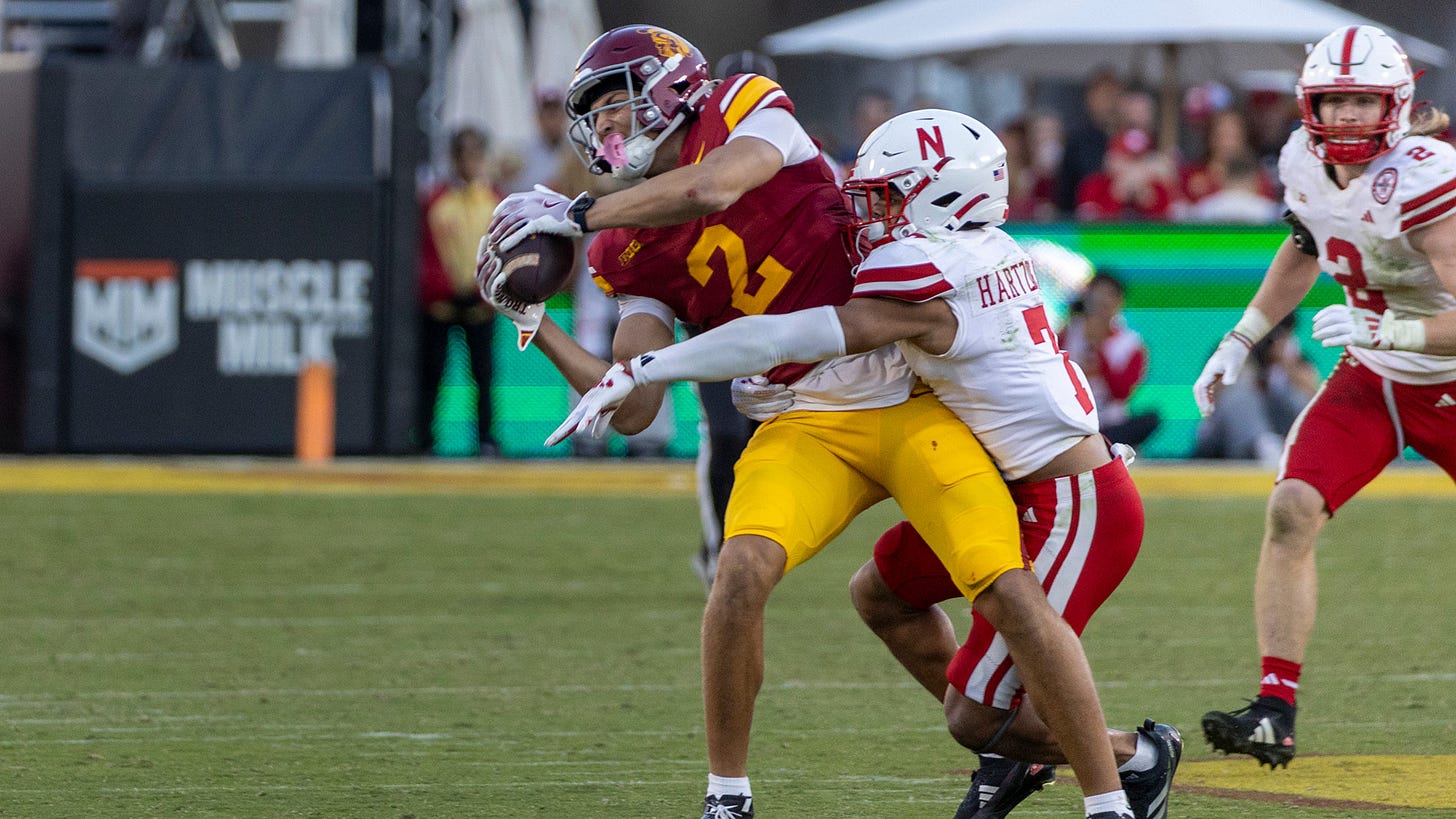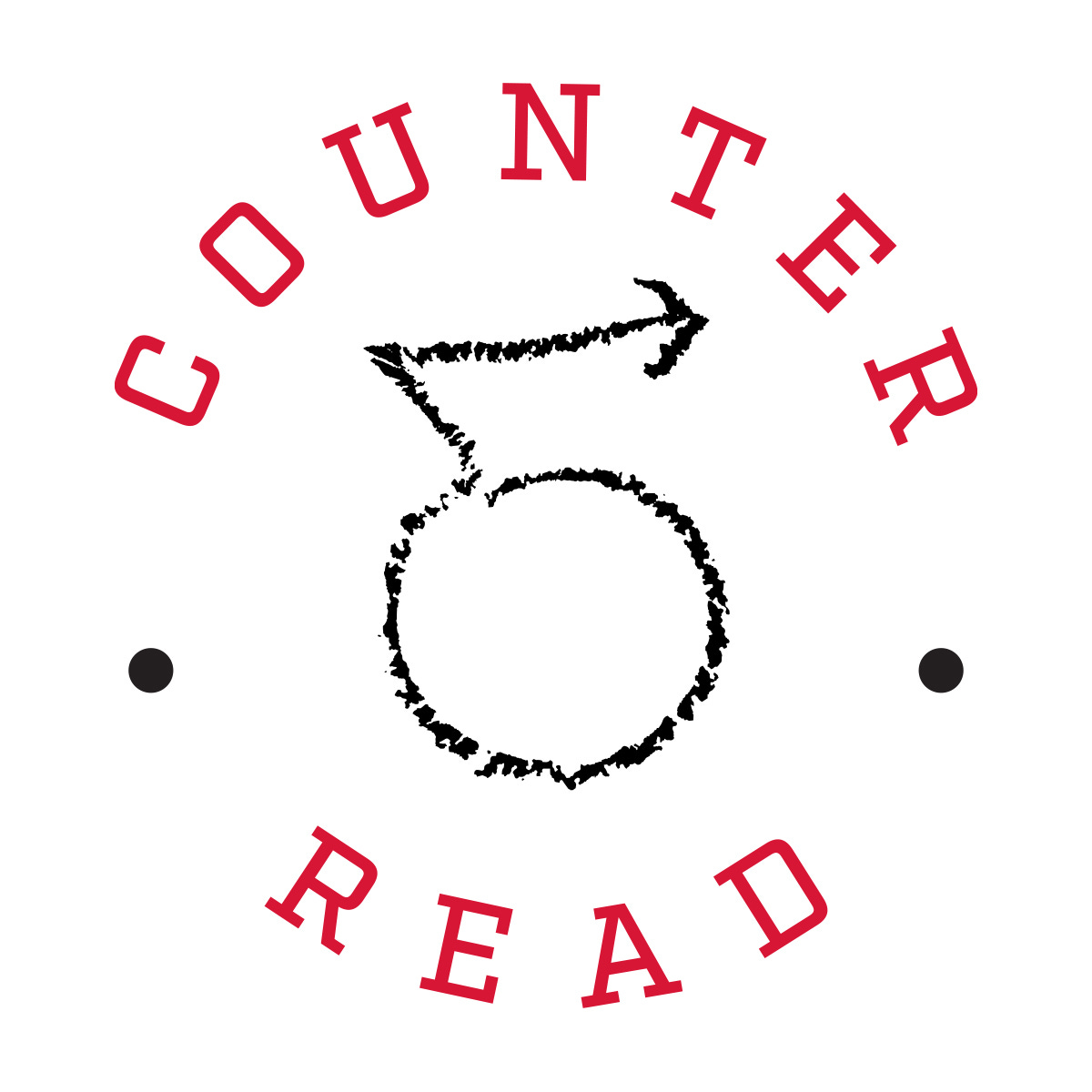The facts are getting sicker, even sicker, perhaps
Nebraska's loss to USC was fairly by the book, but maybe there's an underlying reason tension keeps rising. Successful rebuilds rarely look like this.
By most measures, Nebraska’s 28-20 loss at USC was by the book. The Huskers were about 8-point underdogs by kickoff and lost by eight. The College Football Nerds model projected 6.5 yards per play for the Trojans and 4.7 for NU. The teams averaged 6.6 and 4.9 respectively. That same model pegged Dylan Raiola at 27-for-38 passing with 253 yards. Nailed the attempts and completions, exactly, but Raiola only hit for 191 yards.
It was a road loss to a power-conference opponent, Nebraska’s seventh in nine tries under Matt Rhule. It’s a cynical view—and I don’t know how Husker fans who have watched what is becoming uncomfortably close to a lost decade couldn’t be—but one could even say another one-score loss, with literal balls slipping through literal fingers, was how it was always going to go.
There were no surprises Saturday, which, of course, is the problem. Nebraska has been an underdog in three of its losses in this four-game skid, yet the stakes keep rising with every not-all-that-unexpected loss.
And the stakes should be increasing because the Huskers might be in dangerous territory just 22 games into the Rhule era. He’s spoken often about the “slow” approach to a rebuild, and his Temple and Baylor tenures were basically the dictionary definitions of what that looks like.
But that idea prompted the sort of question that makes it impossible to think about anything else until you try to answer it. At least that’s how my Sunday went. The question: What is the average trajectory for a new coach over his first two seasons?
There are a lot of ways a person could try to answer that. I chose Elo ratings. If you’re not familiar, they were designed for ranking chess players but they’re useful here for a couple of reasons. One, they can carry over from year to year with just a few tweaks. Two, the only way to boost an Elo rating is to actually win games. This is a zero-sum1 system.
With that rough idea, I grabbed every power-conference coaching hire2 since 2007. Nothing significant about that year other than it’s when Nick Saban took over at Alabama and I figured we might as well see what the best looked like after two seasons. I then grabbed the Elo ratings for what each new coach inherited, what it was after Year 1 and what it was after Year 2.
In the chart below I’ve included Saban’s first two years along with the power-conference average as well as each of Nebraska’s last four coaches. The Rhule number for Year 2 is through 10 games this season.
The average power-conference coach start, relative to Elo ratings, is to get a bit worse (-6.3 on average) in Year 1 then take a decent jump (+58.2) in Year 2, a jump that has left the average program with a rating better than what its new coach inherited. Fairly conventional wisdom for the first two years, right? This seems like what’s reasonable to expect of any new hire. Saban’s Alabama tenure started like that.
Of course, the average doesn’t explain every tenure. Bo Pelini had Nebraska on a rocket ship3 after two seasons. His NU career now feels appropriately valued for what it was, but experienced contemporaneously, he got fired. Scott Frost improved Nebraska over two seasons. We all remember how that unfolded. Mike Riley’s first two seasons4 were a textbook example of negative momentum and foretold what was to come.
Rhule’s nearly two seasons in Lincoln do not have him in good company. The Huskers took a slight step back (-21) in terms of rating from what he inherited. Nothing alarming, pretty average. Through 10 games in Year 2, however, NU has had an additional decrease (-52).
Since 2007, there have been 30 coaches who have posted back-to-back Elo decreases over their first two seasons. I won’t list them all, but the group includes tenures like Chad Morris at Arkansas (4-18), Les Miles at Kansas (3-18), Rich Rodriguez at Michigan (8-16) and Derek Dooley at Tennessee (11-14). Two of the 30 coaches in this group, Rhule and Stanford’s Troy Taylor (6-16), are not even done with their second seasons, but of the 28 remaining coaches we have something more to go on, there are two I’d call a success: David Shaw at Stanford (23-4), who faded slightly his first two seasons from the high standard set by Jim Harbaugh, and Missouri’s Eli Drinkwitz (11-12), who finally struck big for the Tigers in his fourth season.
If it feels like things are rapidly slipping away from Nebraska of late, slipping away from a tenure that felt promising just 30 days ago, maybe that urgency is warranted. The recent history here for coaches in Rhule’s position is fairly unforgiving. Doesn’t mean there aren’t exceptions, but it’s not a high-percentage play.
The point here isn’t to be abandon-all-hope. If you’re still here, that’s probably not possible anyway. The point is to offer some context, context I didn’t have 24 hours ago.
Unfortunately for Nebraska, I don’t know we can call this the slow way. It’s something else so far. At Temple, Rhule’s first team (2-10) won fewer games than its predecessor (4-7), but he improved the Owls’ Elo rating a bit (+15), then a bit more in Year 2 (+51), then had a breakthrough (+151) while going 10-4 in Year 3.
At Baylor, Rhule’s first team got a lot worse (-207) due to unique circumstances, got a bit better the next season (+34) and had a huge jump in Year 3 (+391).
Neither of those trajectories included a double-negative to start, which is the danger Nebraska’s in right now. With the way Elo ratings are calculated, even with the biggest possible increases over the remaining two games the Huskers can’t end up in the black, avoiding the dreaded double-negative.
They’d need a bowl game to do that. USC’s win over Nebraska may have been by the book, but this is why it felt so much worse.
There is, very likely, a lot more at stake than simply making the postseason.5
What’s Next?
Just a team Nebraska hasn’t beaten since October of 2012. Wisconsin fired offensive coordinator Phil Longo on Sunday (RIP, Dairy Raid). No word yet on who will take over play-calling duties for Saturday’s game in Lincoln. The Badgers (also 5-5) opened as a 3-point underdog to Nebraska, which is basically just the Huskers6 getting credit for home-field advantage. If more tension is what you needed, this week should offer plenty.
Simple example, but Elo ratings produce a win probability between any two opponents. If a team has an 80% win probability and wins the game it gets credit for being 20% better than expected, but the loser in that game is only dinged for being 20% worse.
Since I’m already down this path, I’ll expand and do more with this data in the offseason to see what it says beyond just the first two years. I might be the only one, but pretty excited about it.
Pelini’s 348-point Elo gain after two seasons ranks 21st among the 175 coaches in this sample.
Riley’s 230-point Elo decrease ranks 155th out of 175 coaches.
Should NU win and Wisconsin loses its regular-season finale to Minnesota, Luke Fickell likely lands in the double-negative Elo club.





Bonus track for anyone who's curious: These are the top-five power-conference coaching changes by biggest two-year Elo gain since 2007:
Sanders, CU, +698 (in progress)
Elko, Duke, +652
Harbaugh, Michigan, +554
Franklin, Vanderbilt, +523
Heupel, Tennessee, +516
It seems like John Butler is getting a pass, the secondary has regressed as much if not more than any other position group. Quinton Newsome was underrated for years and Tommi Hill has been overrated big time after an admittedly a really good November of 2023. That position IMO has been the main cause of defense going from really really good to just good.
Are we just overthinking this whole thing? Is it as simple as having a true freshman quarterback in the big 10 is not a good formula for winning?